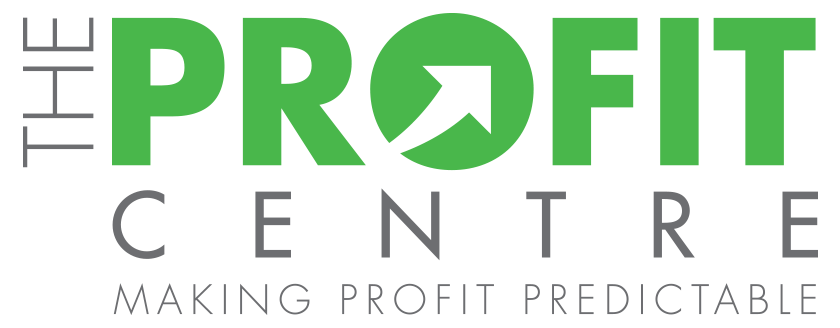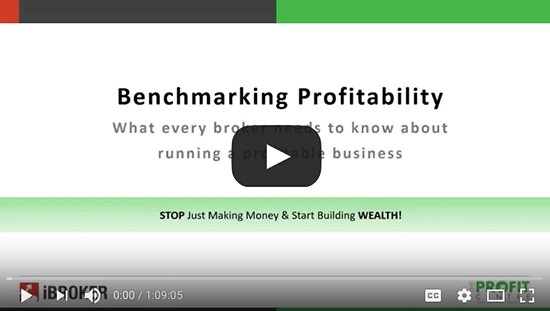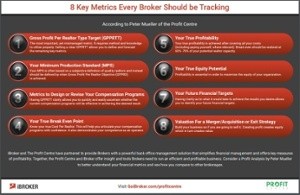
Before designing a compensation program it is important to first identify who your customer truly is before you start recruiting. I believe that many Brokers do not have a defined outline of the REALTOR® they want to attract. Given the challenges of recruitment, Brokers tend to be seduced by the physiological win of a new heartbeat as opposed to being focused on acquiring the right REALTOR®. The result is often the development of compensation programs designed to attract them on price.
The Nine Principles
The following principles should be considered when creating compensation programs:
- You do not have commission splits, you have compensation programs
- Realize that some people prefer a Chevrolet instead of a Cadillac
- Define who your ideal REALTOR® is, don’t let them define it for you
- Do not create plans based on the lowest common denominator
- Your compensation programs should be based on the risk vs. reward principle
- Do not offer conflicting compensation programs that promote one plan at the expense of another
- Do not underestimate the physiology of compensation programs
- Realize that team members need to achieve the same Gross Profit Per REALTOR® Minimum Objective as everyone else
- Have a reasonable number of plan options
Creating compensation programs is easy when you have clarity on the most important number of a brokerage business, your Minimum Gross Profit Per REALTOR® Objective. Working with 100’s of offices and doing more than 600 Profit Analysis at The Profit Centre, we determined that a reasonable benchmark for Gross Profit Per REALTOR® should be around $13,500 per REALTOR®. Note: This is a benchmark for Gross Profit and does not include monies collected on behalf of 3rd parties such as associated regional fees per REALTOR®. Breaking this down we have determined that there are three parts that make up the benchmark:
Fixed Costs:$3,500 per REALTOR® |
Variable Costs:$5,000 per REALTOR® |
Profit:$5,000 per REALTOR® |
For deeper insight into the Gross Profit per REALTOR® Objective refer to my blog posts titled, “GPPR – The Most Important Metric of Your Brokerage and Why it Can be Elusive”, and “A Profitable Brokerage Starts with the Clarity of Your Vision and Goals“.
When there is clarity on the Minimum Gross Profit Per REALTOR® Objective it is simple to design compensation programs. It is important to first review your existing plans and answer the following questions:
- Will they achieve the objective necessary per REALTOR®?
- Given many plans have variable fees, i.e. percentage of gross, do you know how much Gross Commission Income (G.C.I) is necessary to achieve the objective on each plan?
- Do you have minimum production standards set for each plan?
Because many plans are commission percentage based, it is important to know how much G.C.I. a REALTOR® needs to achieve within 12 months in order to meet the objective. It makes no sense to offer plans that do not achieve the objective. Let’s take a closer look at Principle #1.
COMPENSATION PLAN CALCULATORAt The Profit Centre we created a powerful tool called The Compensation Plan Calculator. It lays out different options and scenarios side by side in order to vet out what works best to achieve your objective. Request free access and a complimentary walk through at info@theprofitcentre.com. |
Principle #1 – Compensation Programs, Not Commission Splits
You do not have commission splits, you have compensation programs. Commission splits denote price and compensation programs denote value!
It is important to decide who you are and what value you bring. It is fair to say that all brokerages are not alike even within their own brand. Just like a real estate agent on a listing appointment needs a strong presentation, a broker also needs a substantive recruiting presentation. The purpose of the presentation is to quantify your points of distinction. Ultimately, with the absence of value (or perceived value) price is the only issue.
Compensation programs include all the value that the brokerage brings to the table in order to help an agent become more successful. Your value proposition needs to be clearly identified so that it is clear you are worth more than your competitors because you provide the services necessary to increase their bottom line.
One of my favourite questions to an agent is, “What’s more important to you, how much money you save or how much money you put in your pocket?” If an agent does not see the value you are offering it may be that either a) you could better articulate your value, or b) that agent is not the right fit for your organization.
If you compromise the integrity of who you are and what you bring to the table, you may compromise your financial model and start to water down programs. Offering special deals can hurt more than we think. Integrity lies in the ability to treat everyone fairly. Confidence and integrity come from sticking to your guns. Be proud of who you are, what you are offering and be willing to say no. The tail starts wagging the dog when we are not clear and firm on our position.
your financial model and start to water down programs. Offering special deals can hurt more than we think. Integrity lies in the ability to treat everyone fairly. Confidence and integrity come from sticking to your guns. Be proud of who you are, what you are offering and be willing to say no. The tail starts wagging the dog when we are not clear and firm on our position.
Consider the fact that providing services such as training is a costly undertaking. If an agent does not see value in it for themselves then it will be difficult for you to justify your price points. That being said, are you catering to everyone or is your focus on those that invest in themselves to be more successful. Agents that are price focused tend to be the ones that cost you the most in time and energy.
A coach of mine said to me years ago, “show me your lowest producing agent and I will show you your minimum production standard for the company”. Ouch! It’s one thing to say we have a standard, but it’s another thing whether we uphold it. Nothing discourages more than compromising our values.
We will discuss the next eight principles in subsequent blog posts. This is Peter Mueller signing off wishing you all a profitable day!
|











